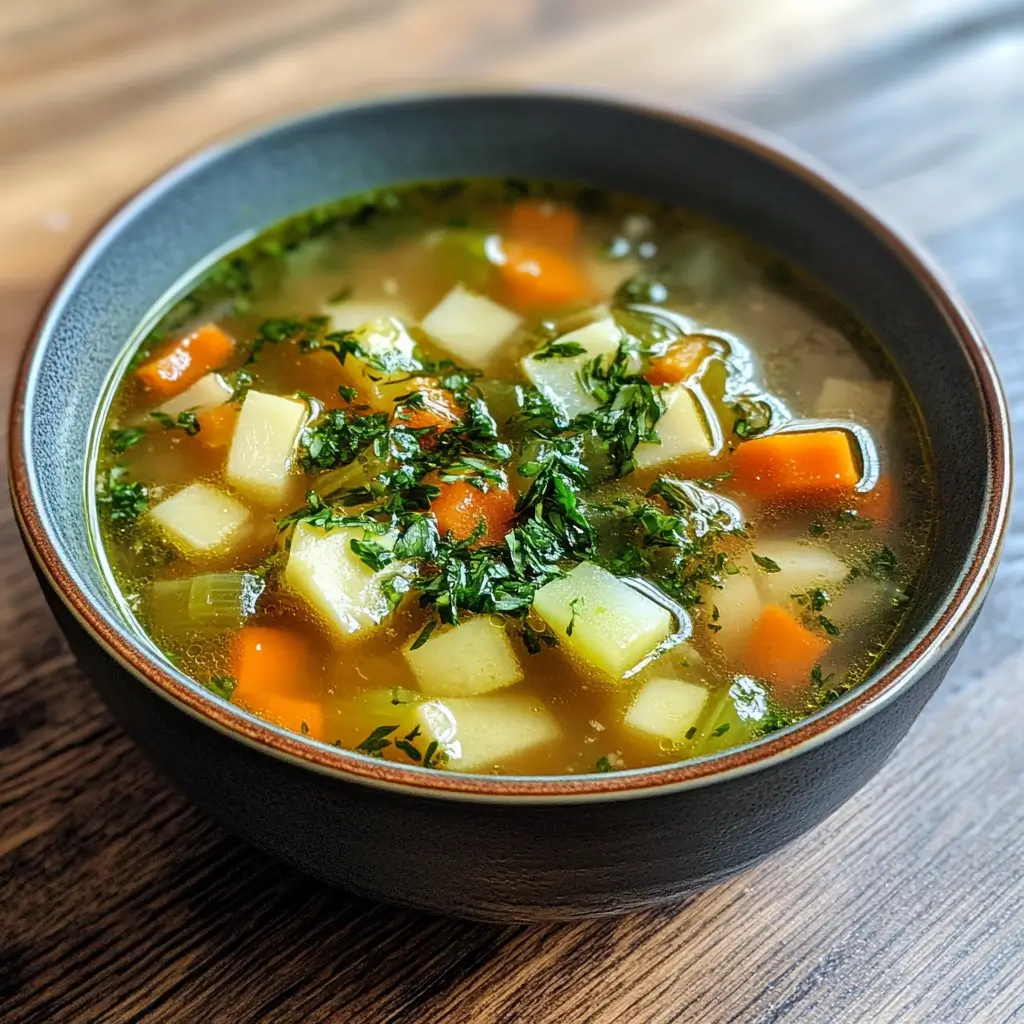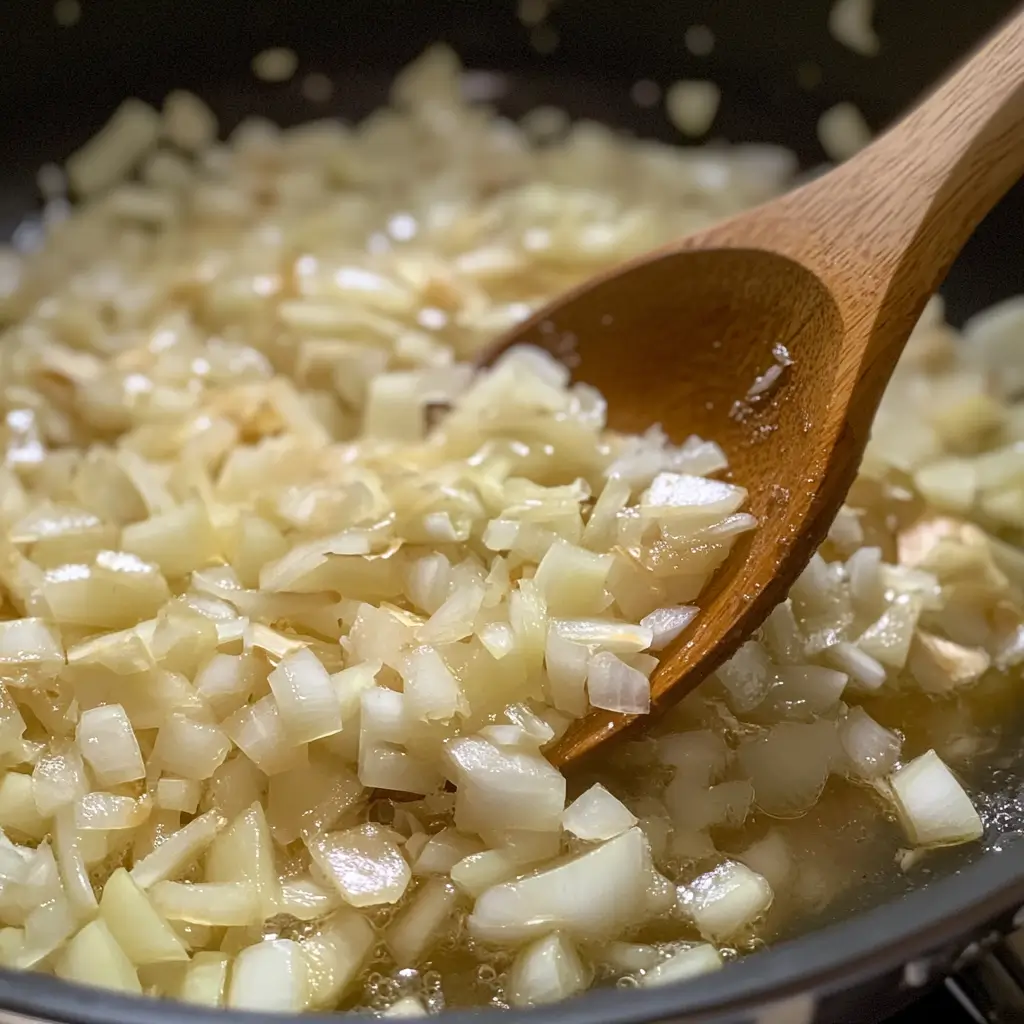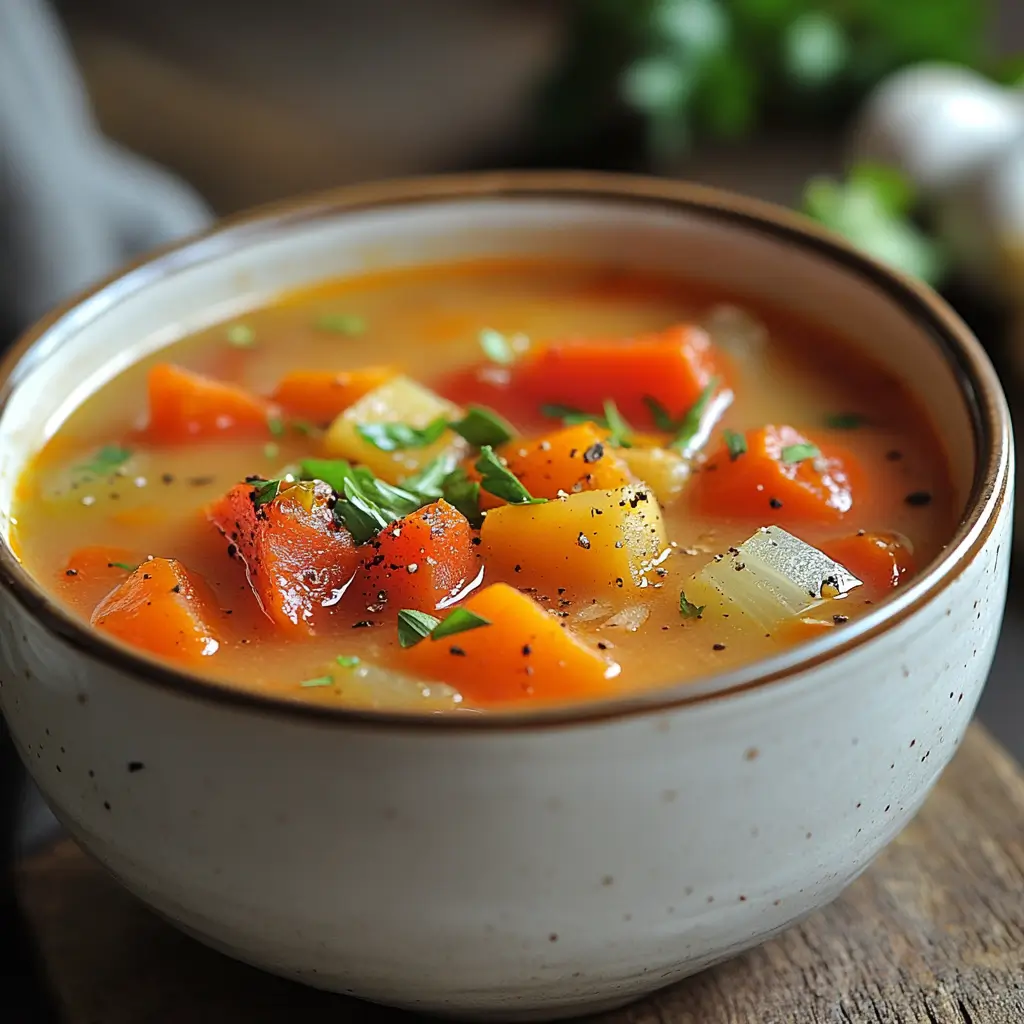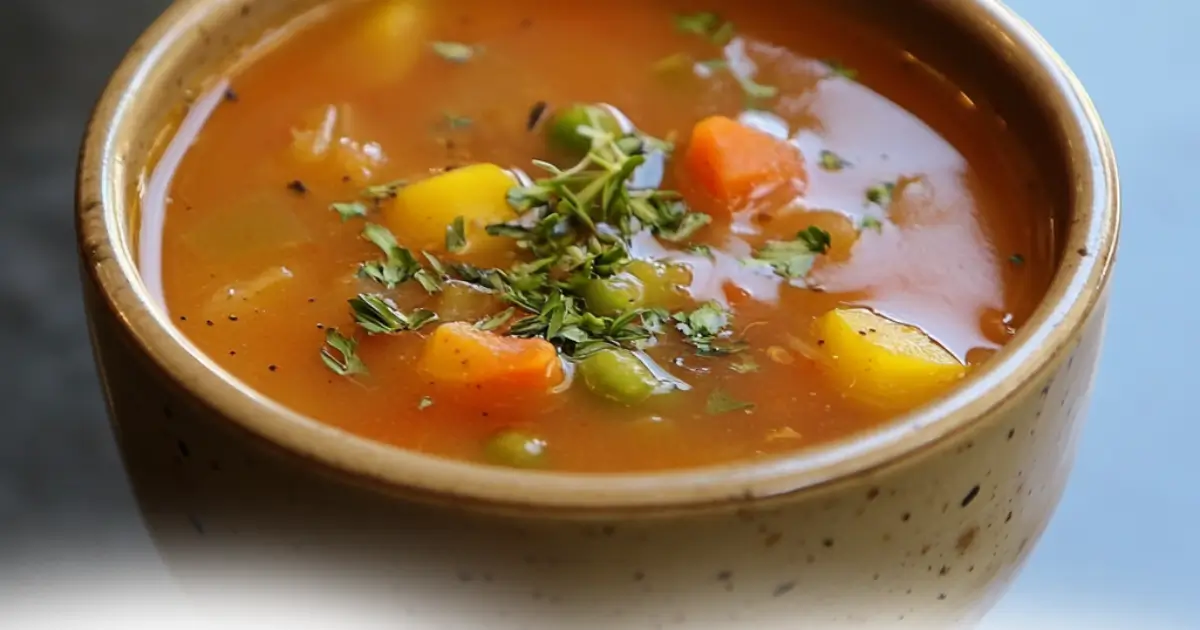Ever wondered, how can I deepen my soup flavor and make every spoonful unforgettable? With a few easy tweaks and thoughtful additions, you can transform an ordinary soup into a rich, flavorful masterpiece. From using fresh herbs and roasted vegetables to adding umami-rich ingredients, this guide is packed with practical tips to elevate your soup game.
This article dives into the secrets of building vibrant, layered flavors in your soups, whether you’re working with a vegetarian broth or a meaty stock. We’ll cover everything from choosing the right base to finishing touches that add flair and finesse. Ready to unlock the potential of your soup pot? Let’s get started!
Table of contents
How Can I Deepen My Soup Flavor with a Strong Base?
Use Homemade Stock
A great soup starts with an even greater base. Homemade stock is like liquid gold for soups, offering a rich and robust flavor you just can’t get from store-bought versions. When you make stock at home, you control the ingredients, avoiding additives while tailoring the taste to suit your recipe. Want a deeper broth? Simmer chicken bones, onion, and garlic for hours. Looking for something lighter? A vegetable stock made from roasted carrots, celery, and herbs is perfect.

If time is tight, try freezing batches of stock. This ensures you always have the perfect foundation for your next soup adventure.
Upgrade Store-Bought Broth
Don’t despair if homemade isn’t in the cards. You can jazz up store-bought broth with ease. Simmer it with fresh aromatics like thyme, rosemary, or a bay leaf. Toss in some chopped veggies, such as carrots and onions, to infuse a touch of sweetness and depth.
Want more umami? A splash of soy sauce, a dash of miso paste, or even a Parmesan rind can transform a standard broth into something extraordinary. Give your store-bought broth 15 minutes with these add-ins, and you’ll be amazed by the transformation.
Build Layers of Flavor
Incorporate Fresh Aromatics
When it comes to deepening soup flavors, fresh aromatics are your best friend. Start by sautéing onions, garlic, and ginger in a splash of olive oil or butter. This step releases their essential oils and creates a savory foundation for your soup. If you want even more complexity, toss in celery or leeks. Their subtle sweetness can work wonders.

To keep flavors vibrant, let the aromatics cook until golden and fragrant—don’t rush it. Wondering how can I deepen my soup flavor with simple ingredients? Aromatics are the answer. They’re versatile and pair beautifully with nearly any base.
Roast or Caramelize Vegetables
Roasting vegetables is a game-changer for soup flavor. High heat caramelizes their natural sugars, intensifying their taste. Carrots, tomatoes, bell peppers, and even garlic can be roasted to add richness to your soup.

Simply toss your veggies in olive oil, sprinkle with salt, and roast them until golden and tender. Puree them into your broth, and you’ll have a soup bursting with smoky, complex flavors. For an even deeper layer, try caramelizing onions. Slowly cooking them until they turn a deep golden-brown adds a sweet and savory punch.
Experiment with Spices and Herbs
Spices can transform a bland soup into a showstopper. Start with pantry staples like paprika, cumin, or coriander for earthy warmth. For a smoky kick, try chipotle powder or smoked paprika. Want a bit of zing? Add a dash of turmeric or curry powder.
Fresh herbs like thyme, basil, or cilantro bring brightness and balance to your soup. Toss them in at the end of cooking to retain their fresh flavors. Don’t be afraid to mix and match spices and herbs—you might discover a new favorite combo. These additions help answer the question, how can I deepen my soup flavor, by layering complexity and personality into every bowl.
Mastering Balance to Deepen Soup Flavor
Add Acidity to Brighten Soup Flavor
When your soup feels heavy or flat, a splash of acid can wake up the flavors. Ingredients like lemon juice, apple cider vinegar, or lime zest can cut through richness and bring a refreshing lift. Add the acid just before serving to ensure it stays vibrant. For example, a squeeze of lemon can brighten chicken noodle soup, while balsamic vinegar adds depth to tomato bisque.
Use Sweetness or Heat to Improve Soup Taste
Balancing flavors is all about contrast. If your soup tastes too salty or bitter, a hint of sweetness can save the day. Try a drizzle of honey, a dash of maple syrup, or even caramelized onions.
On the other hand, heat can add excitement to your soup. Spices like chili flakes, cayenne, or even a splash of hot sauce can create a lively kick. Adjust the amount to your taste, but remember, a little heat goes a long way!
Taste and Adjust for Perfectly Balanced Flavor
The simplest trick to mastering balance is tasting as you go. Adjust seasoning gradually, adding salt, pepper, or other spices in small amounts until the flavors pop. Don’t forget to balance textures too—a pinch of crunchy croutons or a dollop of yogurt can elevate both the taste and the experience.
Balancing sweet, spicy, and sour notes ensures your soup isn’t just tasty but unforgettable. If you’ve been wondering, how can I deepen my soup flavor, it often comes down to these final adjustments!
Enhance Soup Flavor with Finishing Touches
Drizzle High-Quality Oils for Deeper Soup Flavor
A small finishing touch can make a big difference. Drizzling high-quality oils like extra-virgin olive oil, truffle oil, or chili-infused oil just before serving adds depth and complexity to your soup. These oils not only enhance the flavor but also give your soup a glossy, luxurious appearance.
For example, a creamy tomato bisque can benefit from a swirl of basil-infused oil, while a hearty mushroom soup comes alive with a dash of truffle oil. This simple addition helps answer the question, how can I deepen my soup flavor, by creating a final flourish of taste and texture.
Add Textural Contrasts to Improve Soup Taste
Texture is just as important as flavor. Introducing crunchy elements like croutons, toasted nuts, or crispy fried onions can elevate the eating experience. Smooth soups, like butternut squash or leek and potato, pair beautifully with crispy toppings for a satisfying crunch.
For a creamy soup, consider adding tangy dollops of Greek yogurt or sour cream. These not only contrast textures but also introduce subtle tangy notes to balance richness. Garnishes like these transform a simple soup into a gourmet dish.
Add Textural Contrasts to Improve Soup Taste
People eat with their eyes first. Garnishes like fresh herbs, edible flowers, or thinly sliced vegetables add a pop of color to your bowl. Sprinkle some chopped chives or parsley over a creamy soup, or add a wedge of lime for zest and flair. These finishing touches make your soup look as good as it tastes.
Techniques to Deepen Vegetarian and Meat-Based Soup Flavor
How to Add Depth to Vegetarian Soup Flavor
Vegetarian soups often lack the umami depth that meat-based broths provide. You can fix this with ingredients like miso paste, nutritional yeast, or dried mushrooms, which add a savory punch. Roasting vegetables, as covered in Part 2, also builds layers of flavor.
Coconut milk is another excellent addition for creamy vegetarian soups, adding a luscious texture and subtle sweetness. If you’re still wondering, how can I deepen my soup flavor without meat, these techniques offer foolproof solutions.
Deepening Meat-Based Soup Flavor with Simple Steps
Meat-based soups rely on the protein for flavor, but there’s more to it than just tossing meat into the pot. Browning or searing the meat beforehand creates a rich caramelized layer that enhances the soup’s taste. If you’re making chicken soup, simmering with bones for an extended period extracts collagen, giving the broth body and depth.
Adding a splash of Worcestershire sauce or soy sauce during cooking enhances umami, while finishing with a touch of vinegar balances richness. These small steps can take your meat-based soup to the next level.
Check out ZenaRecipes’ Smothered Chicken and Rice Recipe for another comforting dish to try!
FAQs
What Are Simple Ingredients to Boost Flavor in Soup?
Some simple yet powerful ingredients to boost soup flavor include fresh herbs like thyme, basil, or parsley, and umami-rich additions such as soy sauce, miso paste, or a Parmesan rind. A squeeze of lemon or lime juice can brighten flavors, while caramelized onions or roasted vegetables add depth.
How Can I Make Store-Bought Broth Taste Homemade?
To mimic homemade broth, simmer the store-bought version with chopped vegetables like carrots, celery, and onions. Add aromatics such as garlic, bay leaves, and thyme for complexity. A dash of Worcestershire sauce or a piece of Parmesan rind can add richness, while fresh herbs at the end create a fresh, vibrant touch.
Which Herbs and Spices Work Best in Most Soups?
Versatile herbs like parsley, thyme, and bay leaves work in a variety of soups. Spices such as cumin, paprika, and black pepper add warmth and depth. Experimenting with combinations tailored to your ingredients ensures a harmonious blend of flavors.
How Can I Add Depth to Vegetarian Soups?
Ingredients like nutritional yeast, dried mushrooms, and roasted vegetables add layers of umami to vegetarian soups. Coconut milk, miso paste, and tamari are excellent for enhancing richness and balance.
What Techniques Can Balance the Flavors in Soups?
To balance flavors, taste frequently and adjust with salt, acid (lemon juice or vinegar), or a touch of sweetness (honey or maple syrup). Adding contrasting textures like crunchy croutons or creamy yogurt also enhances the overall soup experience.

